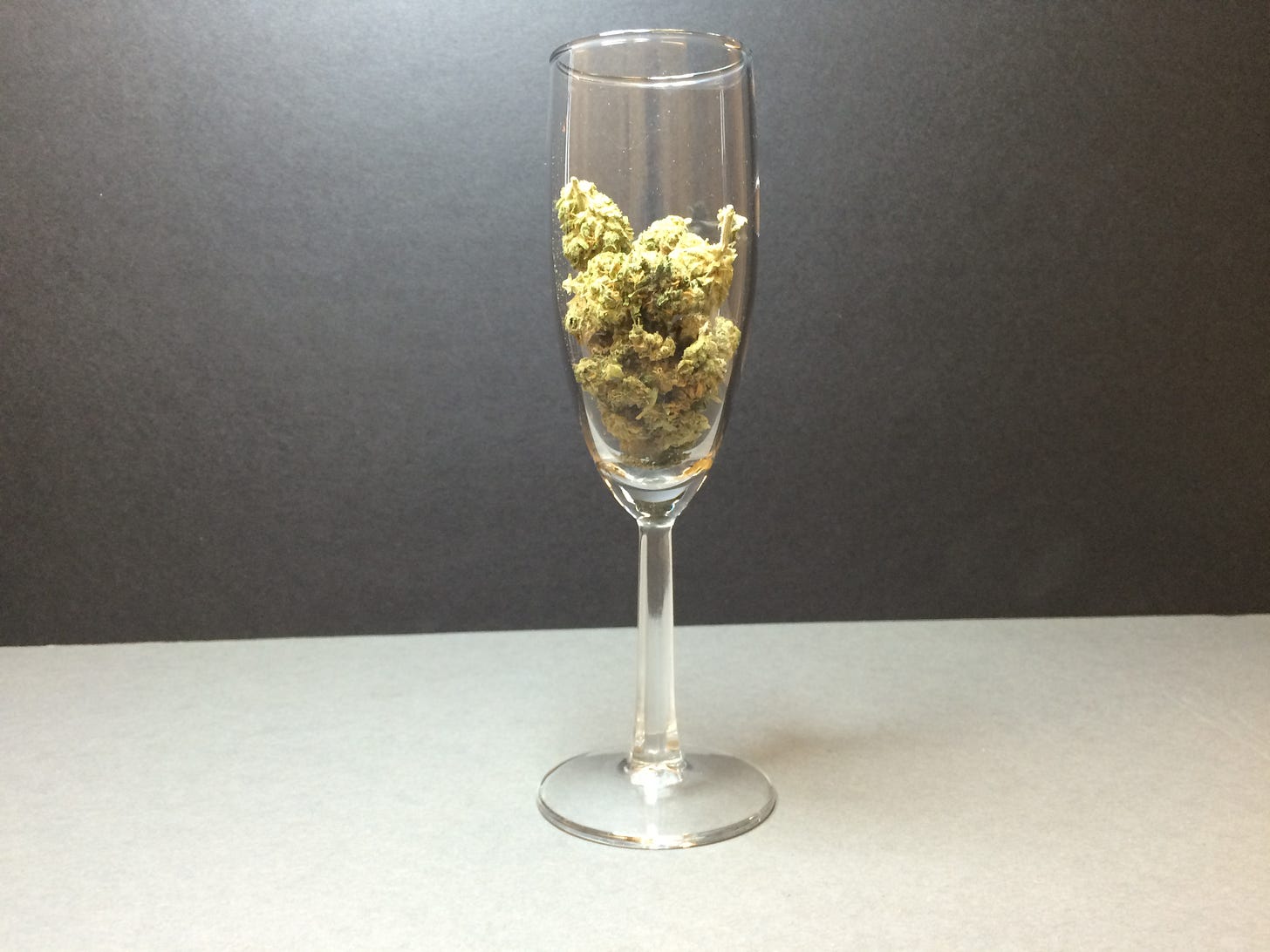Image courtesy of Headspace Sensory LLC
NPR science correspondent Pien Huang visited a commercial cannabis grow in Maryland and talked about it with the host of NPR’s Short Wave podcast. The episode, called Why weed’s signature scent has changed over time, is without a doubt the dippiest thing you can listen to on the topic—and not just because everyone on the podcast begins sentences with “So”.
Host Regina Barber provides the setup: when she walks around town she often smells weed. Huang expands with
It’s that skunky, gassy smell that wafts out from doorways and windows and people’s stoops. It is that unmistakable smell of weed.
Huang conflates the smell of raw flower with the smell of burning weed. But whatever.
At the cultivation facility, Huang enters a room full of the top-selling Gelato Cake strain that’s five days from harvest. To her, it smells “a little floral, a little hoppy,” while the facility describes it as “sweetness and grapes with some cognac on the finish.”
According to the grow’s operations manager, “this is definitely one of our more complex profiles. Its dominant terpenes are caryophyllene, limonene, and linalool.”
Hunh? Those three terpenes are found in nearly every strain of cannabis. On their own they don’t justify calling it a “complex profile.” Did the podcasters miss something?
Next, the Short Wave presents Pamela Dalton*, a smell scientist at the Monell Center. She doesn’t bother to cite evidence; instead, she walks down memory lane:
I’m almost 70 years old. And the cannabis I smelled when I was 13, 14, 15 smelled way skunkier than anything that I experience now.
Based on what? Fifty-seven years of sparking up doobies? Whatever.
Back to Huang:
But Pamela says that there’s been a trend in cannabis cultivation towards new strains and hybrids that are more pleasant to more people.
Again, based on what? I’m not aware of any work Dalton has done with cannabis.
Huang marches on:
But in more recent years, (...) cannabis breeders and growers are developing new strains. And there’s been a blossoming of varieties with more smells and flavors.
That’s interesting, but what’s driving it? Is the cannabis consumer becoming more sophisticated? Do aroma preferences differ by region or market segment? NPR listeners never find out, but they do get this exchange:
BARBER: OK, so, Pien, nobody buys cannabis just for the smell, right?
HUANG: It’s true.
BARBER: [LAUGHS]
HUANG: Yes. That is a fact. The main reason people buy cannabis is for its psychoactive properties, to get high or to relax or to treat a medical condition.
Sure, yuck it up. But if consumers are buying based on THC content, not smell, then why all this effort to breed strains with nuanced aromas? Huang and Barber are oblivious to the contradiction in their report, and Dalton’s boomer memories don’t shed any light.
Meanwhile, this headline appeared four days before the NPR podcast:
The article, by Ben Adlin, describes research by Caleb Y. Chen who conducted semi-structured qualitative interviews with cannabis breeders for his Master’s thesis at Cal Poly Humboldt.
“In 2025,” Chen writes, “just a handful of Cannabis cultivars are grown at all levels of the Post-Prohibition landscape. Most products are produced from just a handful of Cannabis cultivars which the large part of the market now considers to be generic agricultural commodities, perfectly substitutable with each other.”
“Craft Cannabis,” the thesis continues, “besides being a marketing term,” is now “a counterculture within the industry.”
That’s awkward. Is cannabis a flourishing world of smell diversity (NPR) or is it becoming a uniformly bland commodity (Caleb Chen)?
Some of us have addressed this dilemma before. Here’s me a while back in the journal Luxury:
While pursuit of chemical metrics such as THC or CBD content continues to be a priority, breeders might take another tact. They could seek hybrids that appeal to the sensory preferences of a defined consumer segment. For this epicurean approach to work, breeders need a defined sensory target. Ideally this would be a quantitative sensory segmentation of the consumer population. It would let breeders and marketers know, for example, the proportion of consumers who prefer OG Kush-style earthy funkiness, along with the demographics of that group and the extent to which their preference drives purchase intent and price sensitivity. While routine in other consumer goods sectors, this kind of high-resolution segmentation has yet to appear in the cannabis industry.
Sadly, not much has changed since I published that. Product aesthetics remains a low priority for the cannabis industry and, as NPR has inadvertently demonstrated, ignorance is endemic.
Avery N. Gilbert, Cannabis: The uncertain path from agricultural commodity to luxury consumable. Luxury 7:35-53. 2021.
Caleb Y. Chen, Post-Prohibition changes in Cannabis genetics. A Thesis Presented to The Faculty of California State Polytechnic University, Humboldt in Partial Fulfillment of the Requirements for the Degree Master of Arts in Public Sociology, May 2025.
*Dalton is a former colleague of mine from the Monell Chemical Senses Center.




